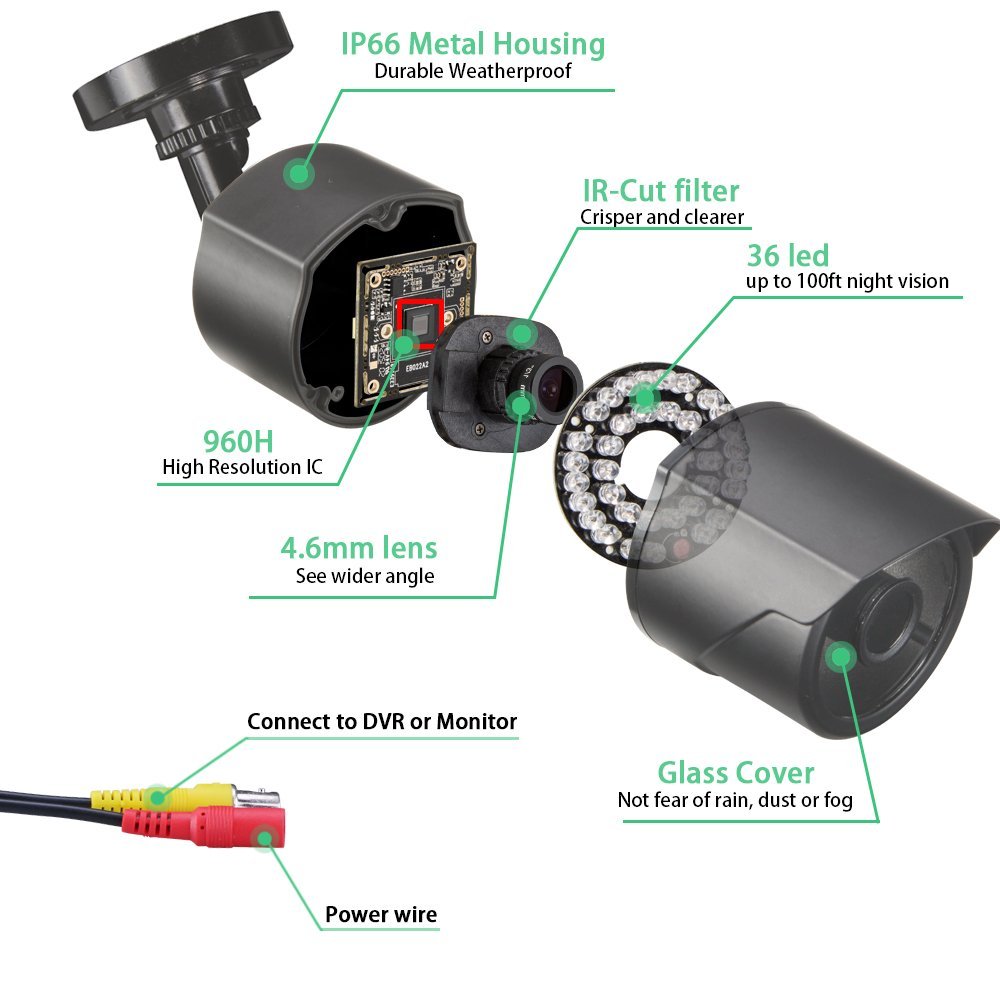CCTVs are made keeping the requirements of users in mind. They can come in various configurations depending on the needs. The main components of CCTV are as follows:

1) Housing
The housing is chosen based on the look and feel of it. It can be dome, bullet, box, etc. The housing also depends on the IP rating required. Most cameras are IP66 rated which means that it can withstand splashes of water from all sides. It is not water proof which means that it cannot work underwater. The housing also depends on the type of hardware that must be fitted into it.
2) Mainboard
There is a mainboard which contains the chipset or CPU of the camera. This CPU does the image processing. There is also a sensor on the mainboard which decides the image quality. Sony sensor produces better quality image but is costlier than the Chinese/Taiwanese sensors.
3) Day/Night
Day/Night or nightvision is achieved by fitting a ring of infrared LED light bulbs in the camera. It lso has a light sensor which detects when there is no light in the room. In such dark situations, the LEDs are automatically switched on. Humans cannot see the infrared light, only the camera sees it. Humans can see only a faint red glow in the LEDs. The cameras can come with 24/36/48 LED bulbs depending upon the distance up to which the camera must capture video and the lens that comes with the camera.
4) IR Cut filter
IR filters are placed below the lens. When the camera goes into nightvision mode, the filter blocks other lights and only passes infrared light. This produces a black and white image of the field of view. Black & white images are sharper than colored images during night.
5) Lens
CCTV cameras come with a variety of lenses. While the most common type is a 3.6mm lens which catches about 77 degree view angle, there are lenses for wide angle, long range, manual varifocal, zoom lenses, etc.
6) Cable
Analog CCTV uses coax cables while IP CCTV cameras uses Ethernet cable. Depending on your camera, use the appropriate cable.
When these components have been chosen, the lens is focused, the mainboard is tested and then put on assembly line where laborers screw the parts together.
